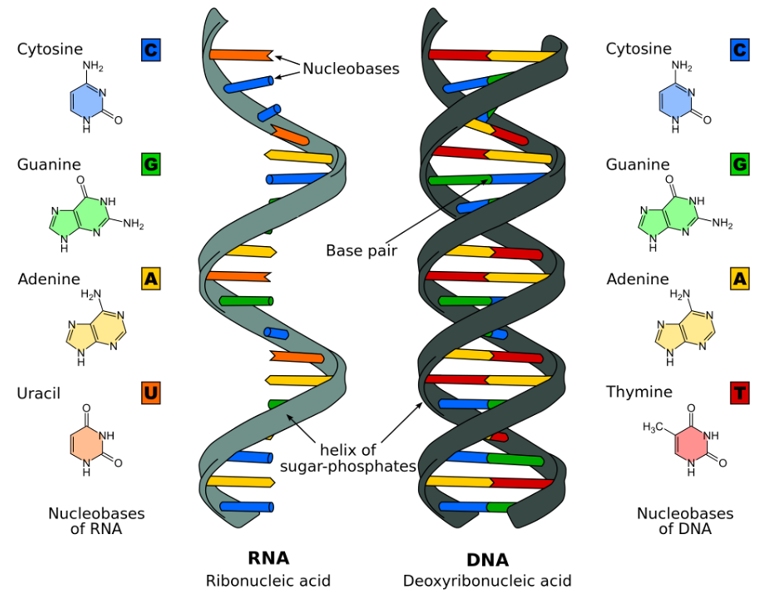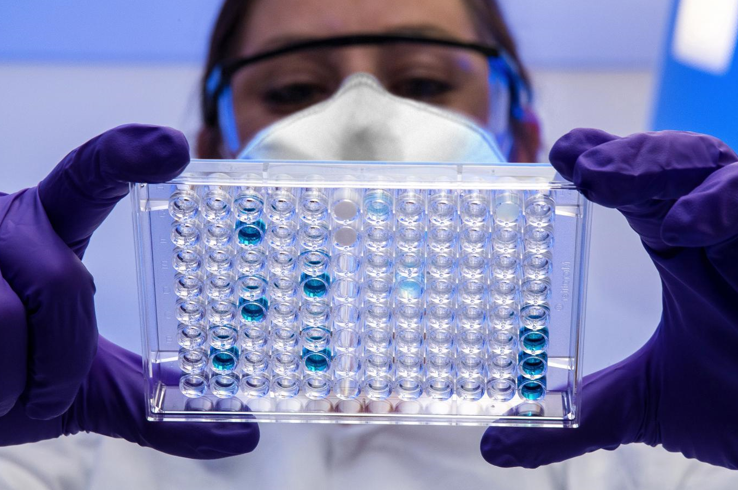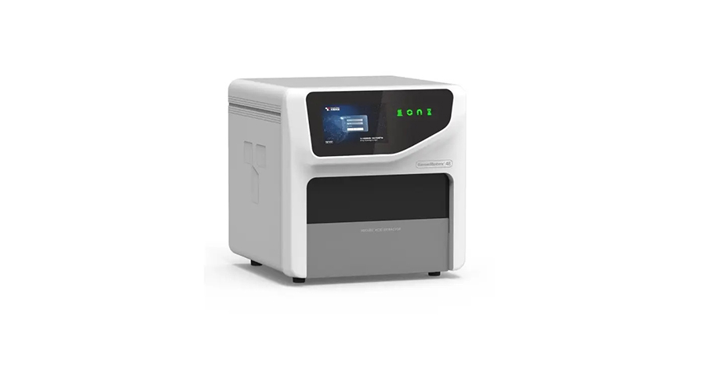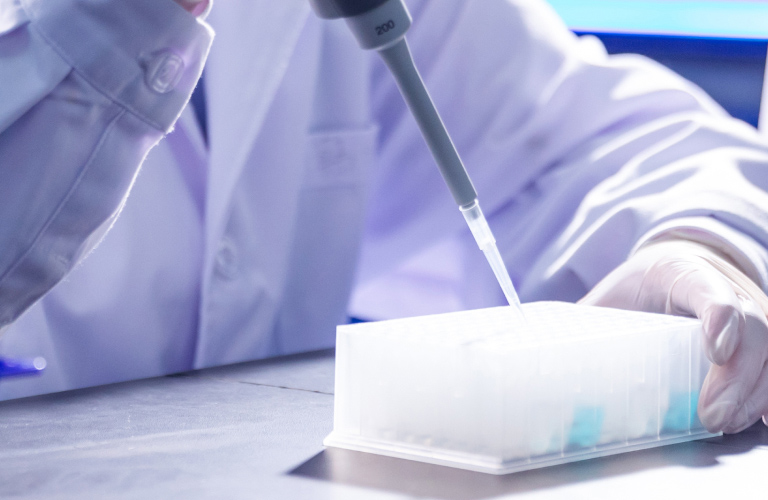While the original nucleic acid extraction method was first introduced in 1869[1], many new advancements and discoveries have been made. Today, nucleic acid extractors play a significant role in genomic studies and the diagnostics process of certain illnesses. Different techniques are used for this procedure, but a high-quality extractor forms a strong foundation.

Image 1: A diagram showing the structure of RNA (left) and DNA (right). Uracil is the base paired with adenine in RNA, whereas thymine is paired with adenine in DNA. Image credit: Wikipedia
What is Nucleic Acid Extractor
Nucleic acid extraction is the initial step in the NGS sample preparation protocol. Nucleic acids are large biological molecules essential to all known forms of life. They consist of nucleotides, monomers composed of three components - sugars, phosphates, and nitrogenous bases. The two major classes of nucleic acids are DNA and RNA. The sugar of RNA is ribose, while the sugar of DNA is deoxyribose.
The Workflow of the Nucleic Acid Extractor Device
Nucleic acid extraction is always the first step in any nucleic acid-related experiment. It is a critical pre-analytical step in the development and execution of any successful molecular diagnostic method to ensure reliable results. Nucleic acid extraction consists of three main processes: isolation, purification, and concentration.
The workflow of a nucleic acid extraction machine device generally involves several common steps. Here is a general outline of the workflow:
1. Sample Preparation: Collect the biological sample (e.g., blood, tissue, swab) containing the nucleic acids of interest.
2. Lysis: The sample is treated with a lysis buffer or reagent to break down cell membranes and release the nucleic acids. This step aims to disrupt cellular structures and make the nucleic acids accessible for extraction.
3. Binding: After release, the nucleic acids are attached to a solid support or matrix, like magnetic beads or a silica membrane. The solid support holds onto the nucleic acids while removing any other contaminants through washing.
4. Washing: The bound nucleic acids are washed to remove impurities, including proteins, lipids, and other cellular components.
5. Elution: The purified nucleic acids are eluted or released from the solid support, typically using a low-salt or nuclease-free buffer.
6. Quantification and Quality Control: The extracted nucleic acids are often quantified using spectrophotometry or fluorometric methods to determine their concentration.

Applications of Nucleic Acid Extraction Techniques
A nucleic acid extractor can be used in a variety of settings. It's an in vitro diagnostic medical device and an option that can be used in food, forensics, and more. Let's take a closer look at the potential applications of a nucleic acid extraction machine:
1. Healthcare: In healthcare, a nucleic acid extractor can be used to extract both RNA and DNA from blood, tissue, and saliva. This can be used to test for genetic disorders. Certain infectious diseases can also be identified.
2. Biodiversity Assessment: With the suitable extraction method, it's possible to use a nucleic acid extractor to determine the bacteria, viruses, fungi, and other microorganisms that are present in a specific environment.
3. Food and Pharmaceutical Industries: With a nucleic acid extractor, it's possible to test food samples, as well as pharmaceutical products, to try for their safety. The method can be used to determine if certain species of harmful bacteria are present in food, for example.
4. Forensics: These techniques are also valuable for forensics, as they can help detect the cause of death and identify individuals.
5. CDC: In cities and country-wide applications, a nucleic acid extractor becomes a helpful tool in detecting the spread of an infectious disease or understanding where an outbreak is coming from.
Game-Changer: Tianlong's GeneRotex 96 Nucleic Acid Extractor

Tianlong GeneRotex 96 Nucleic Acid Extractor is based on the automatic extraction principle of magnetic bead adsorption separation. Using magnetic microspheres as the carrier for nucleic acid separation and purification can overcome the shortcomings of traditional extraction methods of complicated steps, time-consuming, low yield, and challenging to achieve automatic operation, thus realizing rapid and efficient preparation of samples. Here are some key features of GeneRotex 96 Nucleic Acid Extraction Machine:
Flexible: With the GeneRotex96, you can flexibly and efficiently extract 1 to 96 samples in each run. Also, there is the flexibility to create, edit and delete protocols.
Efficient: The innovative 6*16 extraction module, compatible with 96-well deep-well plates and 6-tube strips, provides high-throughput extraction with less reagent waste without the inconvenience of traditional throughput fixation. This unit also includes an automatic control system with motor-driven automatic opening and closing of the lab cabinet, making it faster and more efficient.
Safe and Accurate: The Tianlong GeneRotex 96 Nucleic Acid Extractor is designed with our innovative Rotational Mixing Technology (RMT), which reduces aerosol generation during purification, minimizes the risk of false positives due to cross-contamination, and ensures the accuracy of experimental results.
Accessibility: It is equipped with a 7-inch color touch screen, simple and easy to understand, and convenient for experimental personnel to operate.
Conclusion
Tianlong holds 120 international certificates, and its selection of laboratory equipment reaches labs in over 100 countries. The company has over 80 intellectual property rights, with 70 NMPA approvals. Our company offers various laboratory equipment, including PCR thermal cyclers, PCR systems, and nucleic acid extractor options. Find out how TianLong can help your lab grow and improve performance by contacting us.
References
[1] https://www.ncbi.nlm.nih.gov/pmc/articles/PMC5529626/

